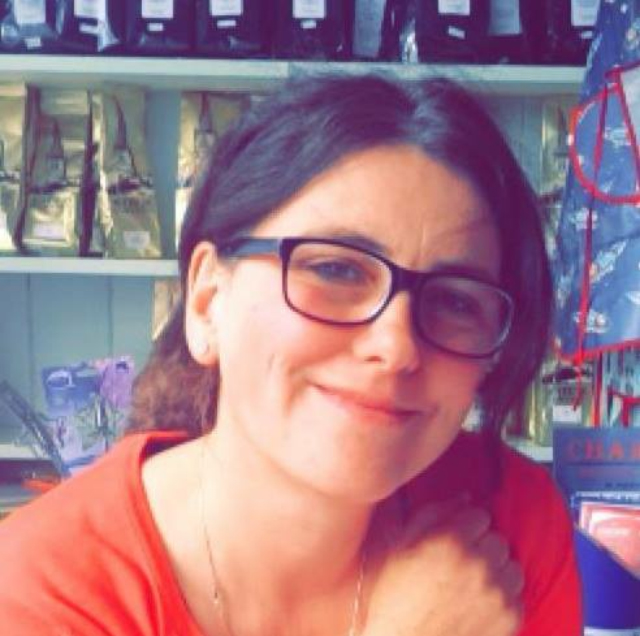Gillian McFarland (pictured below) is an artist and art therapist currently working between Leicester and Fife. She gave us an insight into what Art Therapy involves.
I came to Art Therapy through a well trodden route. After graduating from art school in London I drifted into community arts and art education projects looking for continuity of earnings to pay the rent more than through a pressing social conscience. Increasingly I found myself working on social engagement projects and wondering ‘when things are so desperate what is the real value of art? What did the funders of the project expect it to deliver, what were the participants expectations and what did we the artists think we had to offer?’ This was the late 80s and the Arts in Health agenda had still to raise its banner.
Art Therapy beckoned to me after several years of working freelance on community arts engagement projects. It seemed a natural progression – offering the dynamics of working safely with groups, building trusting and stable relationships. As a therapist I have worked for 14 years within adult and child psychiatry, forensic services, with the elderly and people affected by dementia, mothers with post natal depression, those experiencing homelessness, and community mental health groups. I feel privileged to have shared this journey with people who have shown me what art really means. I have now come full circle and am currently working as an artist (who is an art therapist) with groups. Being an artist gives you more freedom to take risks and to engage in a more personal way with individuals. Now I am older I am comfortable in my risk assessing skills and feel I have a body of knowledge from my art therapy practice to underpin the way I currently work as an artist.
Art Therapy is about the creative journey to wellbeing and is a profession with a duty of care and a code of conduct practiced by qualified individuals. People ask me if Art Therapy is a good career choice and yes, for me it was. I find the continuing debate between Art Therapy and Arts in Health fascinating. We are all on the same spectrum and wellness through identity is increasingly being recognised by the Health and Social Services as well as Museums and Culture.
To become an arts therapist you need to complete a postgraduate qualification which can take 2 years full time or 3 years part time. To practice clinically, you are required to be registered with the Health Professions Council (HCPC). For those interested in working directly with people through the medium of creativity and art making, art therapy is a good career choice. You can work as an independent practitioner or you can work as part of a multidisciplinary team, working closely with other healthcare professionals, such as psychologists, nurses, social workers, occupational therapists and psychiatrists.
Art therapists are trained in the psychology of image making, the establishing and maintaining of therapeutic relationships, the importance of boundaries, and psychological and psychotherapeutic practice. Art therapists help people make sense of and express difficult thoughts and feelings through creative activities. You do not teach art in a prescriptive way and your clients do not need any artistic skills. Within Art Therapy there are many different specialisms. Art therapists work in a variety of settings with adults and children, including: education, the NHS, Museums and Culture, Social Services and The Prison Service.
As a therapist you are required to have a good understanding of the language of art. You need to be creative and imaginative, non judgmental with the ability to work as part of a team or as an individual, a good communicator, able to provide a trusting and facilitating relationship in which clients can explore their creativity. In your sessions, typically an hour long, you may work one to one or with groups using art materials and processes to sort through complex and confusing emotions, which may be difficult to express verbally. Through the art making, the client/s can develop their self-awareness, strengthen their identity and build their confidence. Part of an art therapist role is to devise distinct ways of working with clients in different environments. This may include providing a secure environment and a variety of art materials to those who cannot speak, allowing the art itself to become a valuable means of communication. In group work, an art therapist will encourage members to relate to each other via the art they produce. The images and their meanings for the group will need to be worked through which can take some time. You may work with a client from a one off session to 12 months depending on their individual needs.
See Gillian’s showcased work on Central Station here.
More: Website | Facebook | Twitter
//////
The A-Z series looks into a variety of creative professions, demystifying them and offering a clearer idea of what is involved. Visit here for more articles.












Comments